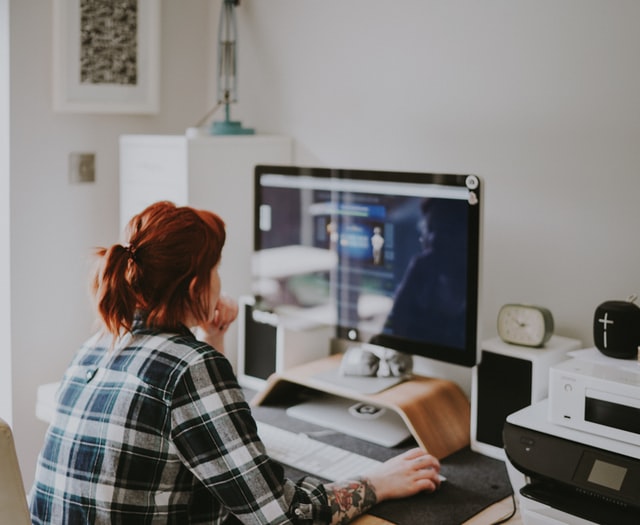In 2010 the presenteeism rate was at 26%. By 2018 it had rocketed up to 86%.
And for an issue that costs the UK economy at least £15.1 billion a year, only 25% of companies are doing anything proactive to reduce it.
It costs companies about £4000.00 per employee, per annum in wages alone.
It’s a big problem.
And not as simple as someone coming in sick, barely working and then infecting the rest of the team.
Presenteeism: Understood by many as people showing up to work when they are sick, but it also applies to work stress and carry on regardless, resulting in fatigue and risk of burnout.
It’s being present in the room but not doing the work to the standard required. Also, not being optimally fit for work, due to deficits in your wellbeing and health – mental or physical.
It leads to poor performance, increased error rates, poor decision making, reduces safety and can and does affect others.
Presenteeism is a severe drag on productivity and overall contribution. It is related to poor health literacy, both by the employee and omissions by the employer to ensure some of the very basics to ensure optimal working conditions.
Most employees will spend an average of 2.5 weeks at work when they should be home, recuperating.
We can be optimistic that post-COVID, this will change, and we’ll have an instinctual aversion to someone coughing and sneezing in the office, but ingrained work and cultural habits are not always easy or fast to change.
We have a current paradigm where employees feel they always need to be available.
In the US, if TV shows like Suits are anything to go by, workers are expected to be in the office upwards of 12 hours a day.
This is crazy when research shows that 3-4 hours a day of sustained, deep work is as much as most of us can cope with if we are to be productive.
With smartphones and laptops, even if we are not physically in the office, we are there in virtual reality.
We don’t switch off.
“Advances in technology are generally seen to have more of a positive than negative impact on employee well-being. However, almost nine in ten respondents call out employees’ inability to switch off out of work hours as the most common negative effect of technology on well-being.”
Perhaps we are all suffering from presenteeism at some point during the day or week?
But ignoring presenteeism won’t make it go away, and it’s not as simple as sending someone home.
There are four types and two measurements of presenteeism, according to The Leader’s Council
Functional: Where the employee is unwell, but the illness doesn’t impact their basic levels of work.
Dysfunctional: No positive impact on the employee or productivity, and can impair the future of both.
Therapeutic: Assists the mental health of the employee, but not the performance or long term recovery.
Overachieving: Great performance by the employee, but at considerable cost to their health.
The above can be measured by:
Absolute presenteeism, where performance is related to possible performance.
Relative presenteeism is where performance is related to other workers in the same role.
So, to that silent, unassuming ally.
It’s your digital display screen.
The following may resonate:
There you are, it’s 1 pm, you’ve had back to back zoom calls, and you noticed on the last one that your eyes were burning, Doris from accounts began to look a bit blurred, and then frighteningly, there were two of her, and you left the meeting feeling exhausted.
You lean back on your chair, rub your eyes and neck, and noticed a mild headache.
This isn’t the first time you’ve felt this way. You’re noticing the longer you spend working on your screen, the more tired you feel, your eyes feel drier, and the feelings of exhaustion are creeping in earlier in the day.
You also know that the rest of the day is shot because your eyesight will prevent you from doing any serious work on your pc, as will the headache, and all you want to do is get out of the office, but you can’t, because it’s only 1 pm.
It’s not just sickness that causes presenteeism; it’s also your work environment and your screen as they contribute to fatigue.
We have a raft of research and legislation that tells us exactly this.
Your screen should come with a safety warning.
Seriously.
Working on a digital display screen for too long induces the symptoms of screen fatigue, which cause fatigue of your visual system and musculoskeletal system, which means you are unable to work to the level required.
Presenteeism in a nutshell.
Covid has taught us many things: working from home is possible, and many thrive by doing it.
It’s also shown us that presenteeism levels are a problem, whether WFH or not.
“The Covid-19 pandemic has put a huge strain on employers and individuals. Employers should take a strategic and preventative approach to well-being to tackle work-related stress and unhealthy behaviour like presenteeism and leaveism, and this must be role modelled by those in senior positions.”
Presenteeism is a multifaceted issue, but one thing you can do, and very quickly, is reduce your screen fatigue, take that out of the equation, and then hone in on other factors.
The DSO is designed to mitigate screen fatigue, and it’s straightforward to use. It could improve your productivity by up to 20%, preventing those afternoons from being shot to hell because your eyes can’t focus and you feel physically exhausted.
 Text
Text 





